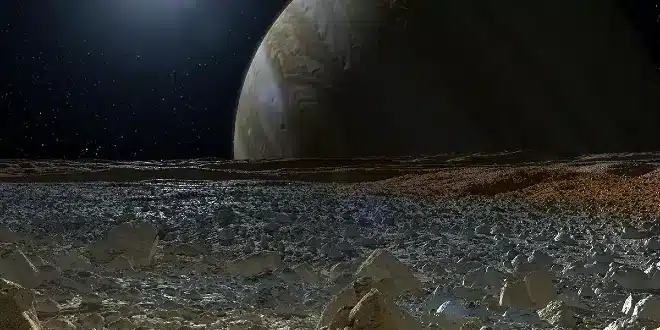Europa, one of Jupiter’s intriguing moons, has fascinated scientists and space enthusiasts for its potential to harbor extraterrestrial life, thanks to its subsurface ocean. Yet, recent findings are prompting a reevaluation of its habitability.
At the Lunar and Planetary Science Conference, planetary scientist Paul Byrne expressed skepticism about the active geological life of Europa’s ocean floor. He suggested that Europa might actually be geologically inactive, which could impact its capacity to support life.
The interest in Europa as a candidate for life stems from its possession of critical life-sustaining elements: liquid water, energy, and essential chemicals. The upcoming Europa Clipper mission by NASA is expected to provide more insights into these aspects.
Life on Europa, if it exists, would need to utilize chemosynthesis for energy, as the moon’s thick ice layer blocks sunlight. However, recent simulations have cast doubt on the presence of necessary volcanic activity on the ocean floor that would support such processes.
Research by scientists like Austin Green and Laurent Pou indicates that volcanic activity, crucial for supporting life, is unlikely on Europa’s ocean floor. This reduces the probability of finding life there.
Nevertheless, the moon’s past might tell a different story. It’s thought that interactions with its neighboring moon Io and shifts in its orbital path could have once made Europa more geologically active and thus potentially more habitable.
The upcoming Europa Clipper mission holds the potential to resolve many uncertainties about Europa’s habitability. It aims to confirm the existence of its ocean and analyze surface materials to detect any signs of interaction with the seafloor, marking a significant stride in the quest to understand life beyond Earth.


